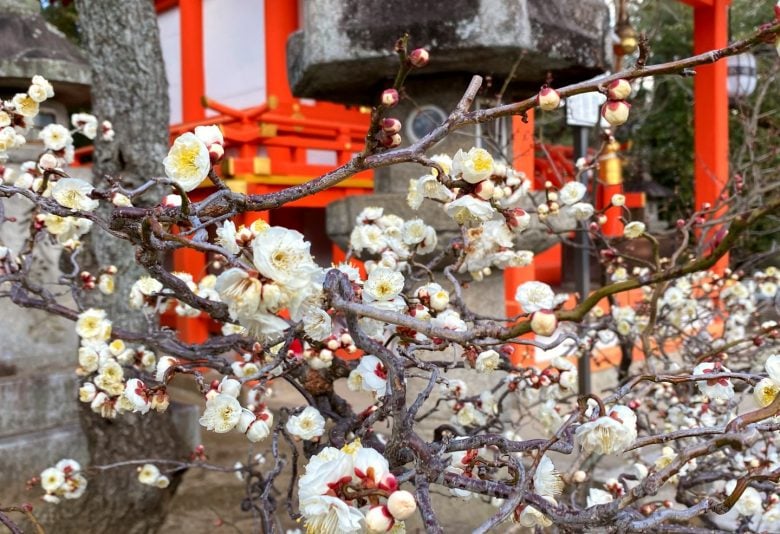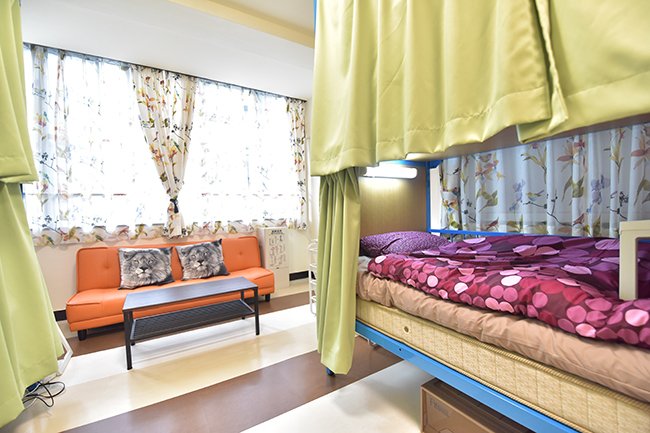
"Ume" est dans l'air
Comme le froid persiste en Février, quelques fleurs commencent à s'épanouir. Ces indicateurs de la saison populaire du printemps au Japon sont les bienvenus. Sortir travailler ou se rendre dans une école ou une université japonaise devient plus agréable à mesure que la nature décore les rues et les parcs. Les habitants et les résidents étrangers de Tokyo et de Kyoto ont leurs appareils photo prêts à apercevoir les couleurs montantes. Parmi ceux-ci, un arbre particulier attire une attention particulière, le prunier japonais, ou "Ume" en japonais.

On pense que l'Ume a été introduit au Japon depuis la Chine au 8ème siècle. La popularité initiale de cet arbre était due au fait qu'il était un symbole de protection contre le mal. Pour cette raison, de nombreuses maisons, temples et sanctuaires l'ont planté dans leurs jardins. Traditionnellement, il est planté sur la zone connue sous le nom de « porte du démon ». Il s'agit de l'angle nord-est d'une parcelle de terrain. On pense que c'est la direction par laquelle le mal traverse une parcelle de terrain.
On connaît peut-être déjà le « ume boshi », ou prune séchée. Comme son nom l'indique, l'Ume est l'arbre qui donne ses fruits. Si vous avez déjà mangé du « ume boshi », l'acidité vous rappellera certainement des souvenirs. Il est le plus souvent consommé sur du riz ou dans une boule de riz "onigiri". Suite à la protection talisman que fournit l'arbre Ume, on pense que manger "ume boshi" pour le petit-déjeuner protège des dangers pendant toute la journée.

Qu'il serve ou non à protéger le mal, il continue d'être l'arbre le plus aimé des Japonais. Le parfum peut également être très agréable et la saveur du fruit peut varier d'un arbre à l'autre. Mais l'aspect le plus attendu de celui-ci, ce sont ses belles fleurs.

Sortir pour apercevoir et prendre des photos de l'Ume est une grande invitation à tous ceux qui attendent l'apparition des arbres "Sakura" (cerisiers en fleurs).
Il existe de nombreux endroits autour de Tokyo et de Kyoto pour profiter de l'Ume. Cependant, celui qui ne peut certainement pas être ignoré est le sanctuaire Kitanotenmangu à Kyoto. Chaque année en Février, le sanctuaire ouvre son célèbre jardin pour que les visiteurs se promènent parmi le parfum et la couleur de cet arbre. Plus tard, le 25 du mois, lorsque les arbres devraient être en pleine floraison, le "Baikasai" a lieu. C'est le festival des fleurs d'Ume. Ce jour-là, les geishas maiko et geiko du district local de Kamishichiken servent du thé vert et des douceurs de saison aux visiteurs. C'est une expérience des plus enrichissantes que nous recommandons. Surtout si vous séjournez à SAKURA HOUSE KYOTO, qui est situé à quelques pas du sanctuaire.
Si vous planifiez votre voyage d'étude, de travail ou de loisirs à Tokyo ou Kyoto pendant cette belle saison, n'hésitez pas à contacter notre équipe. Pour des séjours de courte ou longue durée, trouvons votre maison loin de chez vous et profitez de votre vie au Japon.







